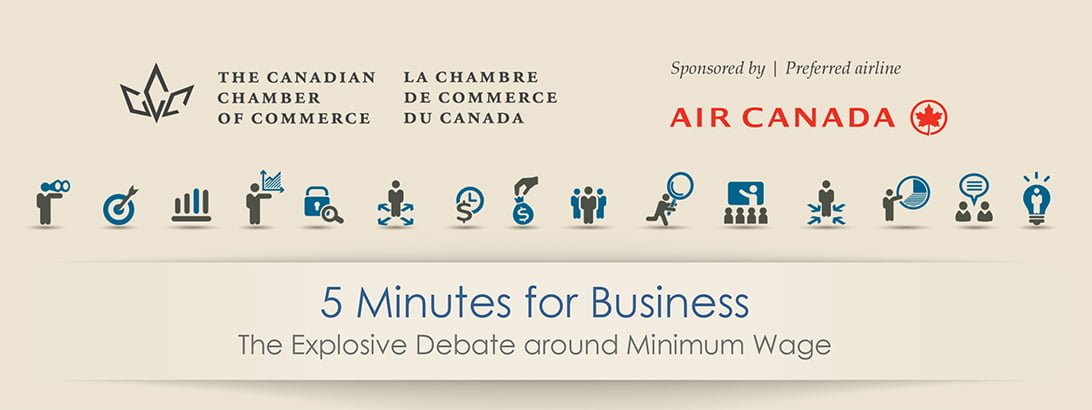5 Minutes for Business
Big increases to minimum wage are becoming fashionable in Canada: first Alberta (from $12.20 currently to $15 in October 2018), then B.C. (from $10.35 to $11.35 in September 2017) and now Ontario (from $11.40 to $15.00 in January 2019, a 30% hike in 18 months). Are workers better off or does it mean fewer jobs?
The debate has been ferocious because economists don’t agree, but let’s look at the fundamentals. The government accepts that carbon taxes are effective at reducing emissions because if you make something more expensive, people will use less of it. We agree, but the same logic must apply to wages. And, actually, a business owner faced with the rising cost of an input (labour) has three options:
- Absorb the added cost out of her profit margin
- Raise prices
- Reduce use of labour by substituting in more capital or simply making do with less work
Let’s take these in order. Some businesses are so spectacularly profitable that owners can just absorb rising labour costs. But Apple and Microsoft don’t use minimum wage labour. If we look at profit margin by industry, the biggest users of minimum wage labour are in retail and food service, with razor thin (below 3%) margins. There is very little room to absorb these costs, and if a business is not profitable, there is not much point in keeping it going.
What about raising prices? The critical ingredient in business success is getting the right price point for your market. One restauranteur told us that the lunch menu in her neighborhood has to be $5-$8, any higher means flirting with disaster. In retail, the competition is with online giants, like Amazon. Often, there is no room to raise prices without driving away customers.
The third option to cope with rising wages is making do with less staff. This is controversial because many studies show that minimum wage can be increased without a corresponding rise in unemployment.
That’s why the recent Seattle study produced such a bombshell. Washington state collects detailed data on hours worked and it showed how part-time workers with irregular schedules are cut back. Seattle’s minimum wage hike reduced the total hours worked by the low-wage workforce by about 9% while raising their wages by only about 3%. The net loss to workers was an average of $125 a month. This is a big, immediate hit to the most vulnerable workers.
In the long-term, minimum wage hikes can also drive labour-saving capital investment. The former CEO of McDonald’s told Forbes, “demands for a much higher minimum wage would force businesses with small profit margins to replace full-service employees with costly investments in self-service alternatives.” At the time, labour groups accused business owners of crying wolf. McDonald’s is now rolling out touchscreen self-service kiosks across Canada and the U.S.
There is some evidence that modest increases in minimum wage can be done without disrupting labour markets, but governments have to be cautious about hurting competitiveness. Previously, I had said there are three options to deal with rising costs, but there is actually a fourth and a fifth option: shut down or move to a different jurisdiction. Let’s provide input to the Government of Ontario to prevent this from happening. The Ontario Chamber of Commerce has done some great work on this issue and has a report that can be viewed here.
For more information, please contact:
Hendrik Brakel Senior Director, Economic, Financial & Tax Policy
613.238.4000 (284) | hbrakel@chamber.ca



